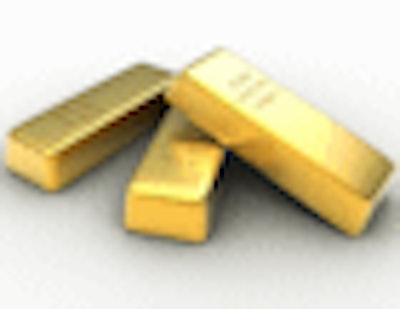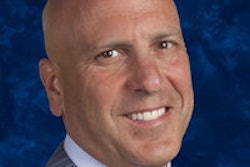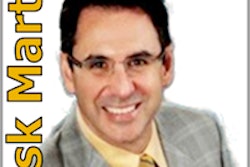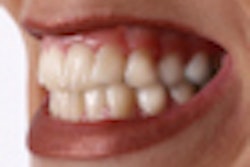
Once one of the most beloved restorative materials in dentistry, gold has been surpassed in recent years by other composite restorative materials as dentists and dental labs adapt to the skyrocketing cost of gold.
"We have seen a 30% increase in gold-based alloy cost this year," Michael DiTolla, DDS, director of clinical education at Glidewell Laboratories, told DrBicuspid.com. "A year ago we charged a dentist $178 for a gold crown; today it's $205."
The current price for full gold is about $1,100 per ounce, while high precious gold sells for $995 and semiprecious palladium-based gold for $550 an ounce. When DrBicuspid.com examined gold prices in 2008, porcelain fused to metal (PFM) was the most popular restorative option. Three years later, PFMs have fallen out of favor but still have a place in dentistry, according to Jeff Stronk, president of the National Association of Dental Laboratories.
— Jeff Stronk, president, National
Association of Dental Laboratories
"I don't see PFMs ever being obsolete," he said in an interview with DrBicuspid.com. "Although they're not going to be as prevalent, I can promise you that." And for many dentists compensated through insurance for restorative procedures, PFMs are "definitely getting very out of reach," he added.
Improved technology has aided the proliferation of alternatives to gold restorations. All-porcelain crowns were considered premium products just four years ago.
"The tables have turned a little bit now, with the onset of zirconia and lithium disilicates and our ability to mill those," Stronk explained. "The price point has come down considerably since the Lava days." The dynamic has shifted to the point where dentists prescribe all-porcelain crowns more conventionally.
Reimbursements a factor
Insurance company payouts have played a role as well. Stronk described a survey of dental offices that he and his partner at Treasure Dental Studio in Salt Lake City performed in 2009. They focused on geographically outlying offices in Utah in particular to learn more about insurance company rates for restorations.
"Eleven out of the 14 we spoke with were paid more for a porcelain restoration than a porcelain to base-metal, precious to porcelain, or a porcelain to a semi," he said. "It was interesting -- when we visited doctors, laid out an Excel spreadsheet, showed them our price points, compared what the ADA codes were for certain categories, lo and behold almost every single one of those doctors found all-porcelain to be a better-paying restoration for them. They're actually getting a better net off of all-porcelain crowns than they were with porcelain to metal."
Patients have benefitted from the shift in some respects. Dentists are using porcelain to zirconia, BruxZir, or lithium disilicate restorations, which have better aesthetics and good biocompatibility at a lower cost.
"We're offering nice warranties on them because the manufacturers are offering good warranties," Stronk explained. "It would seem to be a 'win' situation for all those folks involved."
While alternative restorations have overtaken market space once occupied by gold, applications for the metal are still going to be employed in dentistry.
"Gold will never be obsolete," Stronk said. "The holistic docs might do some inlays when they won't use amalgam and have a fear of composites."
There are also procedures where zirconia simply cannot replace gold. "For example, I wouldn't want to do a 14-unit roundhouse all connected with it because if something went awry, at this point there's no way of cutting and welding zirconia or luting it back together to give it the necessary strength," he said.
But gold is losing ground in other areas of dentistry as well. Precious metals used to be favored in abutment construction, but for many labs that is now a rarity, Stronk noted.
Gold manufacturers are not idly watching their market shrink. While hikes in minerals used in gold alloys such as palladium have gone up as much as 105% in the past year, manufacturers are getting creative.
"They came up with a material called Noble Bond that is still in its infancy," Stronk said. "It's not out on the market yet, but it's one that is going to be a low-cost precious metal."
The skill needed to create gold restorations is unlikely to fade entirely since there will always be a market of individuals who want them and can pay for them, he added.
"In our industry as a whole, there's a dichotomy that's taking place: There's going to be craftsmen and then there's going to be the commodity," Stronk said. "The craftsmen are still going to be doing the high-end that takes an enormous amount of skill. And then there's going to be the production level where they're going to crank out a ton of crowns -- pieceworkers, so to speak."



















